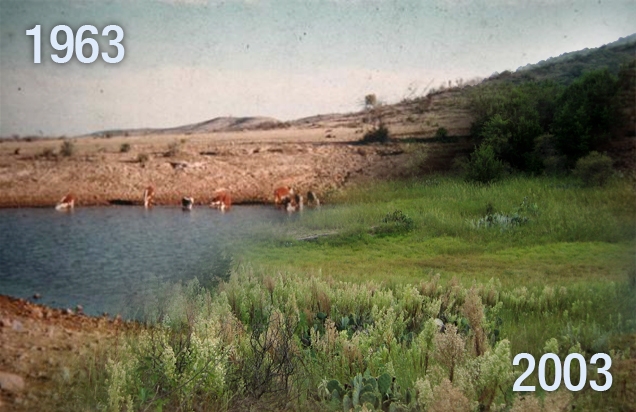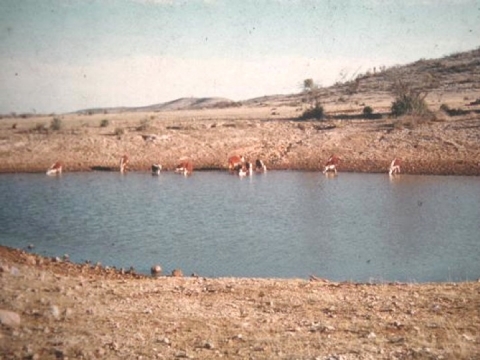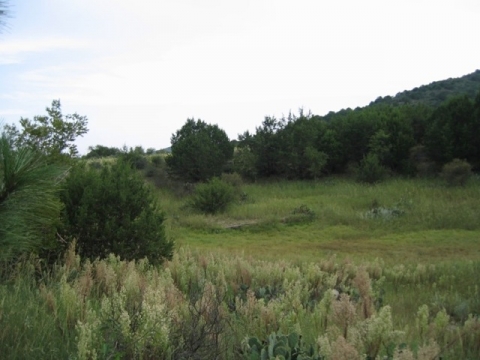Popped Secret: The Mysterious Origin of Corn
Where did corn come from? Genetic and archeological data point to what may seem like an unlikely ancestor. Discover the secret of corn in this HHMI BioInteractive educational video.
Where did corn come from? Genetic and archeological data point to what may seem like an unlikely ancestor. Discover the secret of corn in this HHMI BioInteractive educational video.
A presentation by North Dakota farmer Gabe Brown at the National Conference on Cover Crops and Soil Health.
Natural health expert and Mercola.com founder Dr. Joseph Mercola interviews Gabe Brown, a pioneer in teaching about regenerative land management, which helps restore soil health.
Fertile soil forms the foundation of our modern societies. Although we should be doing everything we can to sustain it, when we look around us, we see a very different story.
Both political initiatives and local actions are necessary to secure the access to food and livelihoods for everyone. Measures for sustainable agriculture are already at hand, but they are often not applied – both on a small and large scale. And even if most of us live in cities, we all can do our part in saving soils all over the world.
“Better Save Soil” is the second collaboration between the IASS and the animation studio of Uli Streckenbach to raise awareness on soil issues.
Tony Lovell will explain the reasoning behind how more green growing plants means more captured carbon dioxide — more water — more production — more biodiversity — more profit. Did you know that a 1% change in soil organic matter across just one-quarter of the world’s land area could sequester 300 billion tonnes of physical CO2. TEDxDubbo focused attention on what we call FACETS — Food, Agriculture, Climate, Energy, Topsoil and Sustainability. These FACETS are actually potent ideas shared by everyday people with an interest in these disciplines. In many of these topics there is an awareness campaign; the aim of bringing our community together united against catastrophic failures in our food-chain, environment and health. It is worth mentioning that we are also indebted to our natural systems for our economic wealth. Failures in Food, Agriculture, Climate, Energy, Topsoil and Sustainability are not just a local issue — they are a global concern.
Author: Seth Itzkan

The Las Pilas Ranch in Coahuila, Mexico, is a model of ecological restoration using Holistic Planned Grazing. Over a twenty five year period from 1978 to 2003, the barren landscape was completely revived. The images below show the transformation. Although the first picture is from 1963, the restoration with Holistic Management didn’t actually start until 1978. During the restoration period, the livestock population was doubled and grazing was done according to a plan that paid close attention to grass health.
 1963. Photo by Guillermo Osuna 1963. Photo by Guillermo Osuna |
 2003. Photo by Guillermo Osuna 2003. Photo by Guillermo Osuna |
Both images above are taken from the same location. Guillermo Osuna, the proprietor of the land, explains that when he began to manage the land, it was common to have dirt dams to capture the runoff – as there was no grass cover. A one-inch rain could fill the trough (pictured above, from 1963). After the land was restored, they could have a six-inch rain, and still no standing water (it’s all absorbed). There is no need for the dirt dams and artificial troughs now. Those have grown over with vegetation and the springs are running year-round. Livestock is now watered via gravity fed pools from streams that run throughout the dry season. Mr. Osuna says there is twice as much surface water now as there once was, and he has also doubled the herd density.
Author: John Quinton
French wine lovers have always taken their soil very seriously. But now the country’s government has introduced fresh reasons for the rest of the world to pay attention to their terroir.
As industrial emissions of greenhouse gases continue to increase and concerns about climate change grow, scientists and policy wonks are searching for potential solutions. Could part of the answer lie in the soil beneath our feet? French agriculture minister Stéphane Le Foll thinks so.
Soil stores vast amounts of carbon, far more than all the carbon in the world’s forests and atmosphere combined. Plants take carbon out of the atmosphere through photosynthesis and when they die the carbon they stored is returned to the soil.
This forms part of the soil’s organic matter: a mix of undecayed plant and animal tissues, transient organic molecules and more stable material often referred to as humus. It is food for organisms in the soil that play a vital role in cycling nutrients such as nitrogen and phosphorus. These organisms decompose the organic material and return much of the carbon to the atmosphere leaving only a small proportion in the soil.
Author: Jop de Vrieze
Scientists have recently discovered thousands of microbial species living in, on, and around plant roots that help plants survive and thrive—for instance by facilitating the uptake of nutrients and water, warding off pests and diseases, and enabling plants to cope with drought, flooding, toxins, or extreme temperatures. Scientists are trying to harness these symbionts for use in agriculture. Several microbial products are already in use on the farm, and major agrochemical companies are investing heavily in research to develop others. To what extent microbial products can eventually increase yields or reduce the use of pesticides and chemical fertilizers is still unclear, however.
September 20, 2015 marked 25 years since my father, Robert Rodale, was killed in a car accident in Russia. If on that fateful day someone would have asked him what his legacy was to be, I know for a fact he would have answered: “Regenerative organic agriculture.”
To him, organic alone was not enough. He believed we needed a commitment to making things better. But more importantly, he understood that nature inherently makes things better when left to do her work. Nature heals itself, just as our bodies inherently attempt to heal themselves when wounded. We needed, he thought, to get nature on our team to make organic agriculture reach its true power.
A lot of people thought he was crazy. But some thought he was onto something.
After he died, the idea of regenerative agriculture seemed forgotten as the organic movement grew. But lately, there has been a resurgence of support behind the idea of regeneration. Thanks to the work of Tom Newmark, with the Carbon Underground, people are gathering around the tribal fire of regenerative organic agriculture in a way that my father would have only dreamed about. There’s even a growing movement toward regenerative capitalism, an idea proposed by the Capital Institute‘s John Fullerton.
Keep Reading on Maria’s Farm Country Kitchen
Global hunger, pollution, and water scarcity – how are these interrelated? Courtney White, a former archaeologist and a Sierra Club activist, connects the dots for us in his book Grass, Soil, Hope: A Journey Through Carbon Country.
Growing up in Phoenix, Arizona, he first became concerned about some of the environmental issues going on in the 1990s, at which time he joined the Sierra Club.
“I met a rancher at a Sierra Club meeting in 1996. His name was Jim Winder… This was back in the mid-’90s when ranchers and environmentalists were going after each other in court, in public opinions, in newspapers, and all kinds of things.
Jim said, ‘Let’s find some common ground between ranchers and environmentalists.’ He said, ‘I ranch differently. I move my cows around the ranch in a certain way trying to mimic natural grazing behavior of wild animals – bison, for example.
‘I said, ‘That’s interesting.’ I went to his ranch and saw what he was doing. He’s growing grass. He had water, wildlife, and all these things.”
In 1997, the activist and the rancher formed a non-profit organization called The Quivira Coalition, along with conservationist Barbara Johnson. Together, they advocated land management practices that help restore land back to health.One of the keys to land restoration is carbon sequestration. Carbon is the most abundant element on Earth after oxygen. Dark, rich soils contain high amounts of carbon. This element is the tie that binds grazing management, land health, food, water, and rising pollution levels together.
